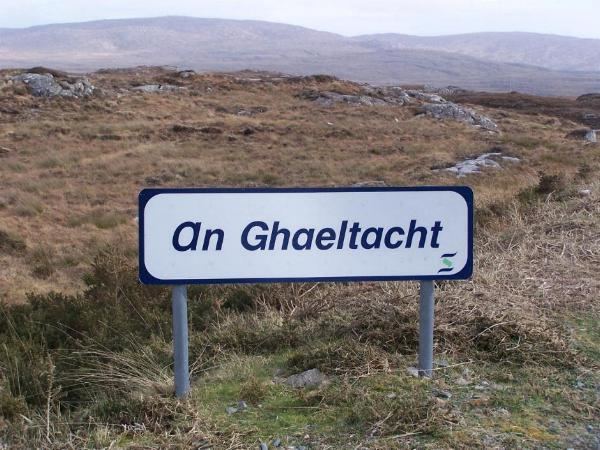 | ||
Gaeltacht (/ˈɡeɪltəxt/; [ˈɡeːl̪ˠt̪ˠəxt̪ˠ]; plural Gaeltachtaí) is an Irish-language word used to denote any primarily Irish-speaking region. In Ireland, the term Gaeltacht refers individually to any, or collectively to all, of the districts where the government recognises that the Irish language is the predominant vernacular, or language of the home. The boundaries of the Gaeltacht have included a high percentage of resident English-speakers since British colonisation.
Contents
- What is the gaeltacht dar s na gaeltachta
- History
- The Gaeltacht today
- Administration
- Demographics
- Donegal Gaeltacht
- Galway Gaeltacht
- Kerry Gaeltacht
- Mayo Gaeltacht
- Cork Gaeltacht
- Waterford Gaeltacht
- Meath Gaeltacht
- Northern Ireland
- Belfast
- County Londonderry
- Dublin
- West Clare Gaeltacht Clare Irish
- North America
- Irish colleges
- References
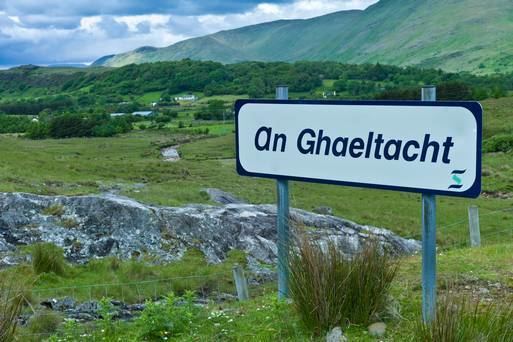
The Gaeltacht districts were first officially recognised during the 1920s in the early years of the Irish Free State, following the Gaelic Revival, as part of a government policy aimed at restoring the Irish language.
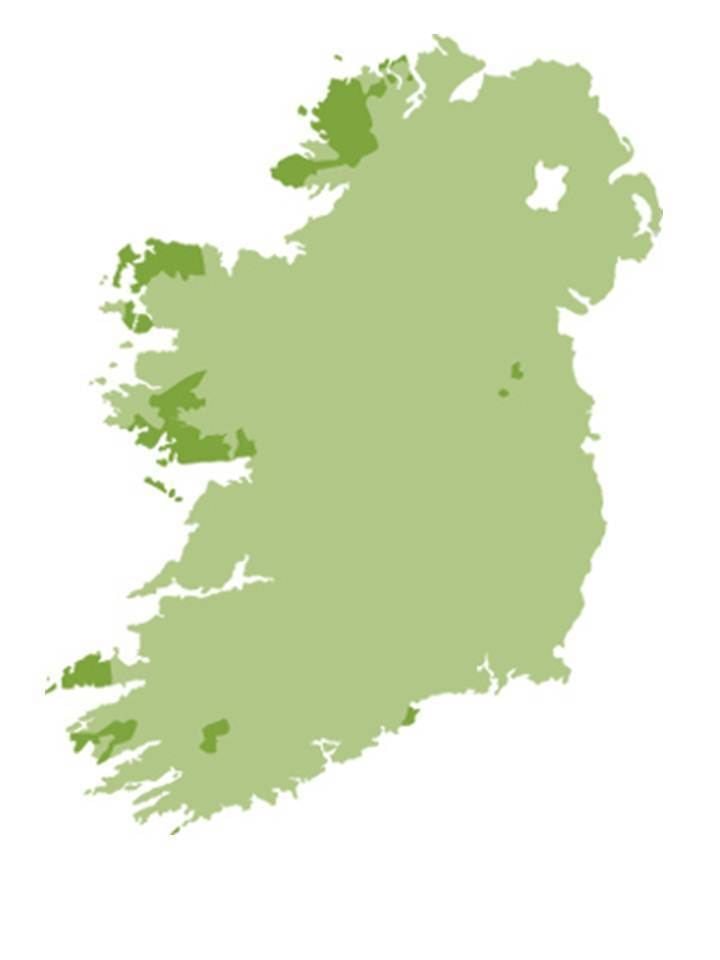
It is now recognised that the Gaeltacht is threatened by serious language decline. Research published in 2015 showed that of the 155 electoral divisions in the Gaeltacht, only 21 are communities where Irish is spoken on a daily basis by 67% or more of the population. 67% is regarded by some academics as a tipping point for language survival.
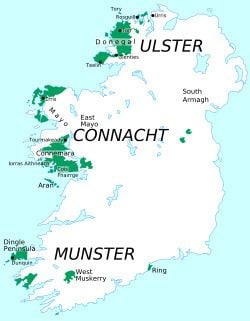
What is the gaeltacht dar s na gaeltachta
History
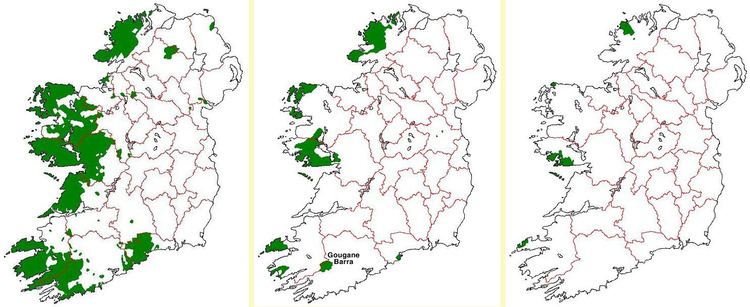
In 1926 the official Gaeltacht came into being after the report of the first Gaeltacht Commission Coimisiún na Gaeltachta. The exact boundaries were not defined. The quota at the time was 25%+ Irish-speaking, although in many cases Gaeltacht status was accorded to areas that were linguistically weaker than this. The Irish Free State recognised that there were Irish-speaking or semi-Irish-speaking districts in 15 of its 26 counties.
In the 1950s another Gaeltacht Commission concluded that the Gaeltacht boundaries were ill-defined. It recommended that the Gaeltacht status admittance of an area be based solely on the strength of the language there. The Gaeltacht districts were initially defined precisely in the 1950s, excluding many areas which had witnessed a decline in the language. This left Gaeltacht areas in seven of the state's 26 counties (nominally Donegal, Galway, Mayo, Kerry, Cork, Meath, and Waterford). The Gaeltacht boundaries have not officially been altered since then, apart from minor changes:
The Gaeltacht today
A study in 2005 by An Chomhairle um Oideachas Gaeltachta agus Gaelscolaíochta (the educational council for Gaeltacht and Irish-medium schools which was established in 2002 under the Education Act 1998) said that Gaeltacht schools were facing a crisis and that without support few of them would be teaching through Irish in 20 years' time. This would threaten the future of the Gaeltacht. Parents felt that the educational system cancelled their efforts to pass on Irish as a living language to their children. The study added that a significant number of Gaeltacht schools had switched to teaching through English, and others were wavering.
In 2002 the third Coimisiún na Gaeltachta stated in its report that the erosion of Irish in the Gaeltacht was now such that it was only a matter of time before the Gaeltacht disappeared. In some areas Irish had already ceased to be a community language. Even in the strongest Gaeltacht areas, current patterns of bilingualism were leading to the dominance of English. Policies implemented by the State and voluntary groups were having no effect. A new language reinforcement strategy was required, one that had the confidence of the community itself. The Commission recommended, among many other things, that the boundaries of the official Gaeltacht should be redrawn. It also recommended a comprehensive linguistic study to assess the vitality of the Irish language in the remaining Gaeltacht districts.
The study was undertaken by Acadamh na hOllscolaíochta Gaeilge (part of the National University of Ireland, Galway), and on 1 November 2007 Staidéar Cuimsitheach Teangeolaíoch ar Úsáid na Gaeilge sa Ghaeltacht ("A Comprehensive Linguistic Study of the Usage of Irish in the Gaeltacht") appeared. Concerning Gaeltacht boundaries, it suggested creating three linguistic zones within the Gaeltacht region:
The report suggested that Category A districts should be the State's priority in providing services through Irish and development schemes, and that Category C areas showing a further decline in the use of Irish should lose their Gaeltacht status.
The 2006 Census data shows that of the 95,000 people living within the official Gaeltacht, approximately 17,000 belonged to Category A areas, 10,000 to Category B and 17,000 to Category C, leaving about 50,000 in Gaeltacht areas which did not meet the minimum criteria. In response to this situation, the government introduced the Gaeltacht Bill 2012. Its stated aim was to provide for a new definition of boundaries based on language criteria, but it was criticised for doing the opposite of this. Critics drew attention to Section 7 of the Bill, which stated that all areas "currently within the Gaeltacht" would maintain their current Gaeltacht status, irrespective of whether Irish was actually used. This status could only be revoked if the area failed to prepare a language plan (with no necessary relationship to the actual number of speakers). The Bill was also criticised for placing all responsibility for the maintenance of Irish on voluntary organisations, with no increase in resources.
The annual report in 2012 by the Language Commissioner for Irish reinforced these criticisms by emphasising the failure of the State to provide Irish-language services to Irish speakers in the Gaeltacht and elsewhere. The report said that Irish in the Gaeltacht was now at its most fragile and that the State could not expect that Irish would survive as a community language if the State itself kept forcing English on Gaeltacht communities.
A report published in 2015, Nuashonrú ar an Staidéar Cuimsitheach Teangeolaíoch ar Úsáid na Gaeilge sa Ghaeltacht: 2006–2011, said that on present indicators, Irish will cease to be used as a community language in the Gaeltacht within ten years. This finding has not found universal acceptance.
Administration
The Department of Community, Rural and Gaeltacht Affairs, under the leadership of the Minister for Community, Rural and Gaeltacht Affairs, is responsible for the overall Irish Government policy with respect to the Gaeltacht, and supervises the work of the Údarás na Gaeltachta and other bodies. RTÉ Raidió na Gaeltachta is the Raidió Teilifís Éireann (RTÉ) radio station serving the Gaeltacht and Irish speakers generally. TG4 is the television station which is focused on promoting the Irish language and is based in the County Galway Gaeltacht.
In March 2005, Minister for Community, Rural and Gaeltacht Affairs Éamon Ó Cuív announced that the government of Ireland would begin listing only the Irish language versions of place names in the Gaeltachtaí as the official names, stripping the official Ordnance Survey of their English equivalents, to bring them up to date with roadsigns in the Gaeltacht, which have been in Irish only since 1970. This was done under a Placenames Order made under the Official Languages Act.
Demographics
At the time of the 2006 census of the Republic of Ireland, the population of the Gaeltacht was 91,862, approximately 2.1% of the state's 4,239,848 people, with major concentrations of Irish speakers located in the western counties of Donegal, Mayo, Galway, and Kerry. There were smaller concentrations in the counties of Cork and Waterford in the south and Meath in the east.
The Gaeltacht districts have historically suffered from mass migration. Being at the edge of the island they always had fewer railways and roads, and poorer land to farm. Other influences have been the arrival of non-Irish speaking families, the marginal role of the Irish language in the education system and general pressure from the English-speaking community. There is no evidence that periods of relative prosperity have materially improved the situation of the language.
Donegal Gaeltacht
The Donegal (or Tyrconnell) Gaeltacht (Irish: Gaeltacht [Chontae] Dhún na nGall or Gaeltacht Thír Chonaill) has a population of 24,744 (Census 2011) and represents 25% of the total Gaeltacht population. The Donegal Gaeltacht encompasses a geographical area of 1,502 km2 (580 sq mi). This represents 26% of total Gaeltacht land area. The three parishes of the Rosses, Gweedore and Cloughaneely constitute the main centre of population of the Donegal Gaeltacht. There are over 17,132 Irish speakers, 14,500 in areas where it is spoken by 30–100% of the population and 2,500 in areas where it is spoken by less than 30%. In 2006 there were 2,436 people employed in a full-time capacity in Údarás na Gaeltachta client companies in the Donegal Gaeltacht. This region is particularly popular with students of the Ulster dialect; each year thousands of students visit the area from Northern Ireland. Donegal is unique in the Gaeltacht regions, as its accent and dialect is unmistakably northern in character. The language has many similarities with Scottish Gaelic, which are not evident in other Irish dialects.
Gweedore in County Donegal is the largest Gaeltacht parish in Ireland, which is home to regional studios of RTÉ Raidió na Gaeltachta. It has produced well-known traditional musicians, including the bands Altan and Clannad, as well as the artist Enya.
Galway Gaeltacht
The Galway County (Irish: Gaeltacht Chontae na Gaillimhe) and Galway City (Irish: Gaeltacht Chathair na Gaillimhe) Gaeltachtaí have a combined population of 48,907 and represent 47% of total Gaeltacht population. The Galway Gaeltacht encompasses a geographical area of 1,225 km2 (473 sq mi). This represents 26% of total Gaeltacht land area. Most speakers are located in the Connemara region. The largest settlement areas are Spiddal and Carraroe. Carraroe is 48 km (30 mi) west of Galway City, while Spiddal is 19 km (12 mi) west of Galway City. There are 30,978 Irish speakers in the Gaeltacht, 11,000 Irish speakers in the Gaeltacht Cois Fharraige and Conamara Theas area including the Aran Islands stretching from Bearna to Carna and another 5,000–7,000 in North Connemara (including the border area with County Mayo) and approximately 4,000 Irish speakers living in areas where the language is spoken by less than 30% of the population.
There is also a third-level constituent college of NUIG called Acadamh na hOllscolaíochta Gaeilge in An Cheathrú Rua and Carna. The national Irish-language radio station Raidió na Gaeltachta is located in Casla, Tuairisc online newspaper in Bearna, and national TV station TG4 in Baile na hAbhann. Galway city is home to the Irish language theatre Taibhdhearc na Gaillimhe.
Kerry Gaeltacht
The Kerry Gaeltacht (Irish: Gaeltacht [Chontae] Chiarraí) consists of two areas – the western half of Gaeltacht Corca Dhuibhne (Dingle Peninsula) and central and western parts of Iveragh Peninsula (Uíbh Ráthach). The largest settlement in Corca Dhuibhne is Dingle and the largest in Iveragh Peninsula is Ballinskelligs. The Kerry Gaeltacht has a population of 8,729 (6,185 Irish speakers) and represents 9% of total Gaeltacht population. The Kerry Gaeltacht encompasses a geographical area of 642 km2 (248 sq mi). This represents 9% of the total Gaeltacht area.
Mayo Gaeltacht
The Mayo Gaeltacht (Irish: Gaeltacht [Chontae] Mhaigh Eo) as of 2011 has a total population of 10,886 and represents 11.5% of the total Gaeltacht population. The Mayo Gaeltacht encompasses a geographical area of 905 km2 (349 sq mi). This represents 19% of the total Gaeltacht land area and comprises three distinct areas – Erris, Achill Island and Toormakeady. Béal an Mhuirthead (Belmullet) is the main town in the Mayo Gaeltacht and is 72 km (45 mi) from Ballina, 80 km (50 mi) from Castlebar and 110 km (68 mi) from Ireland West Airport Knock. There are 6,667 Irish speakers, with 4,000 living in areas where the language is spoken by 30–100% of the population and 2,500 living in areas where it is spoken by less than 30%.
Cork Gaeltacht
The Cork Gaeltacht (Irish: Gaeltacht [Chontae] Chorcaí) consists of two areas – Muskerry and Cape Clear Island. The Muskerry Gaeltacht has a population of 3,895 people (2,951 Irish speakers) and represents 4% of the total Gaeltacht population. The Cork Gaeltacht encompasses a geographical area of 262 km2 (101 sq mi). This represents 6% of the total Gaeltacht area. The largest Muskerry settlements are the villages of Baile Mhic Íre (Ballymakeera), Baile Bhuirne (Ballyvourney) and Béal Átha an Ghaorthaidh (Ballingeary).Cill na Martra (Kilnamartyra)
Waterford Gaeltacht
The Waterford Gaeltacht (Gaeltacht na nDéise, Irish: Gaeltacht [Chontae] Phort Láirge) is ten kilometres (six miles) west of Dungarvan. It embraces the parishes of Rinn Ua gCuanach (Ring) and An Sean Phobal (Old Parish). The Waterford Gaeltacht has a population of 1,784 people (1,271 Irish speakers) and represents 2% of total Gaeltacht population. The Waterford Gaeltacht encompasses a geographical area of 62 km2 (24 sq mi). This represents 1% of total Gaeltacht area.
All education in Gaeltacht na nDéise is carried out through the medium of Irish. There are two Pre-schools, two Primary level national schools, one Secondary School, Meánscoil San Nioclás and Coláiste na Rinne, a private boarding school and summer college. Gaeltacht na nDéise was one of the few Gaeltacht areas in which the percentage of daily Irish speakers increased in the recent updated comprehensive linguistinc survey of the Gaeltacht.
Meath Gaeltacht
The Meath Gaeltacht (Irish: Gaeltacht [Chontae] na Mí) is the smallest Gaeltacht area and consists of the two villages of Ráth Cairn and Baile Ghib. Navan, 8 km (5 mi) from Baile Ghib, is the main urban centre within the region, with a population of more than 20,000. The Meath Gaeltacht has a population of 1,771 and represents 2% of the total Gaeltacht population. The Meath Gaeltacht encompasses a geographical area of 44 km2 (17 sq mi). This represents 1% of the total Gaeltacht land area.
The Meath Gaeltacht has a history quite different from that of the country's other Irish speaking regions. The two Gaeltachtaí of Baile Ghib and Ráth Cairn are resettled communities. The Ráth Cairn Gaeltacht was founded in 1935 when 41 families from Connemara in West Galway were resettled on land previously acquired by the Irish Land Commission. Each was given 9 hectares (22 acres) to farm. Baile Ghib (formerly Gibbstown) was settled in the same way in 1937, along with Baile Ailin (formerly Allenstown). In the early years a large percentage of the population returned to Galway or emigrated, but enough Irish speakers remained to ensure that Ráth Cairn and Baile Ghib were awarded Gaeltacht status in 1967. The original aim of spreading the Irish language into the local community met with no success, and the colonists had to become bilingual.
Northern Ireland
In 2001, the British government ratified the European Charter for Regional or Minority Languages. Irish (in Northern Ireland) was specified under Part III of the Charter, giving it a status comparable to that of the Welsh language or Scottish Gaelic. This included undertakings in relation to education, translation of statutes, interaction with public authorities, the use of placenames, media access, support for cultural activities and other matters. Compliance with the state's obligations is assessed periodically by a Committee of Experts of the Council of Europe.
Belfast
The Gaeltacht Quarter, Belfast (An Cheathrú Ghaeltachta) is an area in Belfast where the Irish language is actively promoted. It is situated mainly along the Falls Road and has Gaelscoileanna (Irish-medium primary schools), a Gaelcholáiste (Irish-medium secondary school) and Naíonraí (crèches), together with a restaurant and agencies where Irish is used and Cultúrlann McAdam Ó Fiaich, a cultural centre which also houses Raidió Fáilte (Northern Ireland's only full-time Irish-language radio station). This has grown from the Shaw's Road urban Gaeltacht in the southwest of Belfast. St. Mary's University College Belfast, also situated on the Falls Road, is the only teaching college with a dedicated Irish Medium Unit. It is also home to An t-Aisionad (resource center) which translates literature into Irish and publishes it for use in schools and other organisations in Ireland.
County Londonderry
An area in southern County Londonderry centred on Slaghtneill (Sleacht Néill) and Carntogher (Carn Tóchair), which had gone from being 50% Irish-speaking in 1901 to having only a few speakers by the end of the century, has seen a language revival since the setting up of a naíscoil in 1993 and a gaelscoil in 1994. In 2008 two local organisations launched a "strategy for the rebirth of the Gaeltacht", based on Irish-medium primary and secondary education. Speaking at the launch, Éamon Ó Cuív, the Republic's Minister for the Gaeltacht, said that the area was "an example to other areas all over Ireland which are working to reestablish Irish as a community language".
Dublin
Dublin and its suburbs are reported to be the site of the largest number of daily Irish speakers, with 14,229 persons speaking Irish daily, representing 18 per cent of all daily speakers. In a survey of a small sample of adults who had grown up in Dublin and had completed full-time education, 54% of respondents reported some fluency in Irish, ranging from being able to make small talk to complete fluency. Only 19% of speakers spoke Irish three or more times per week, with a plurality (43%) speaking Irish less than once a fortnight.
It was reported by Nuacht TG4 on 13 January 2009 that a group in the Dublin suburb of Ballymun, in conjunction with the local branch of Glór na Gael had received planning permission to build 38 homes for an Irish-speaking community or "urban Gaeltacht". This project was based on significant local support for the language, since there are 4 Gaelscoileanna and Naíonraí (crèches) in the area. There have been no reports of further progress with this project.
West Clare Gaeltacht & Clare Irish
Parts of County Clare were recognised as Gaeltacht areas following recommendations made by Coimisiún na Gaeltachta 1925. This was enacted by law under the Gaeltacht (Housing) Acts 1929-2001. There were Irish speakers west of Ennis in Kilmihil, Kilrush, Doonbeg, Doolin, Ennistimon, Carrigaholt, Lisdoonvarna and Ballyvaughan.
Statutory Rules and Orders 1933 No. 85 Vocational Education (Gaeltacht) Area 1933 was made under section 103 of the Vocational Education Act 1930 and sets outs the names of District Electoral Divisions in Ennis, Ennistymon, Kilrush and Miltown Malbay that form part of the Gaeltacht in the Administrative County of Clare. This Statutory Instrument (S.I. No. 85 of 1933) appears to be still on the statute books.
In West Clare a group called Coiste Forbartha Gaeltachta Chontae an Chláir (The Clare Irish Language Speaking Development Committee) aims to have the area recognised once more as a Gaeltacht. It has been claimed that native speakers who received grants under Scéim Labhairt na Gaeilge, a scheme first established by the State in 1933 to encourage the use of Irish in Gaeltacht regions, still live in the county and speak the language daily. It has also been claimed that there are up to 170 people in County Clare who are daily speakers of Irish. The committee aims to develop local networks amongst Irish speakers in County Clare and elsewhere until such time as recognition is obtained.
In December 2016, Coiste Forbartha Gaeltachta Chontae an Chláir published its fifth annual edition of "In Ard an Tráthnóna Siar" [2012-2016], the Kilmihil-based Irish language journal devoted to the restoration of traditional Irish in West Clare. In December 2016, the language committee published its first cárta Nóllag / Christmas Card and its first innovative calendar title Féilire na nGael 2017 and its third information stand to commemorate the decline of Clare Irish. The committee also published an illustrative guide to Cúirt an Mheán Oíche and a sunburst and sword of light crest to remind people of the Easter Rising 1916 throughout Ireland including West Clare.
The objective of Gaeltacht Chontae an Chláir under the leadership of Seosamh Mac Ionnrachtaigh is to preserve what's left of Clare Irish up to 2017 and to encourage self contained local language development networks independent of each other to take more to street Irish and Irish in the home and its steady development and progress at community level without State intervention. .
North America
The Permanent North American Gaeltacht is an area near Erinsville, Ontario in Canada. It has no permanent residents but serves as a resource centre for Irish speakers throughout North America. It was officially opened in 2007.
Irish colleges
Irish colleges are residential Irish language summer courses that give students the opportunity to be totally immersed in the language, usually for periods of three weeks over the summer months. During these courses students attend classes and participate in a variety of different activities games, music, art and sport. There are a number of different Irish colleges for students to choose from throughought the country. Many of the colleges while providing a number of activities and events for young people through the Irish language will be known for or specialise in a specific category. For example Coláiste Lurgan is commonly known for its promotion of the Irish language through music, others are known for water sports, GAA, etc.
As with the conventional schools, the Department of Education sets out requirements for class sizes and qualifications required by teachers. Some courses are college based and others provide for residence with host families in Gaeltacht areas such as Ros Muc in Galway and Ráth Cairn in County Meath, Teileann and Rann na Feirste in County Donegal receiving instruction from a bean an tí, or Irish-speaking landlady. Popular Irish colleges/Gaeltachts include: Lurgan, Spleodar, Colaiste Sheosaimh and Uisce
